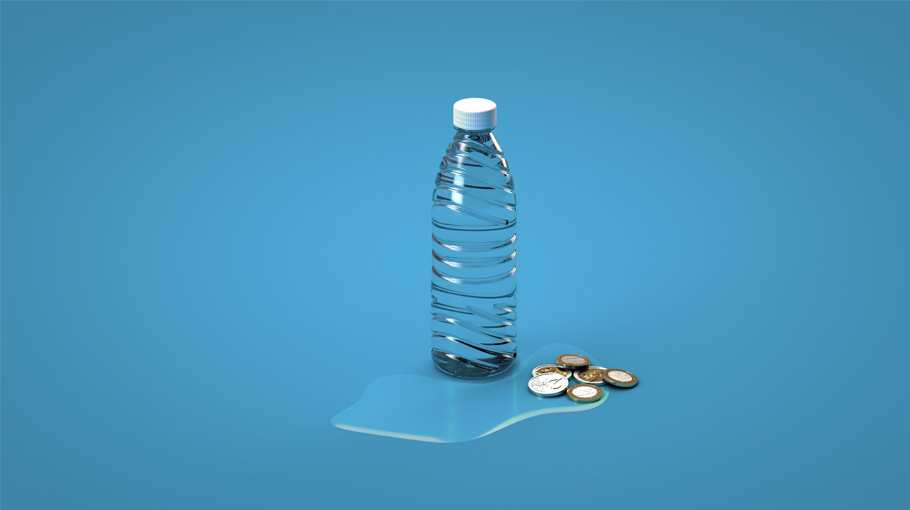The Real Cost of Bottled Water

The price of bottled water has frequently been the focus of both ridicule and concern. While often priced competitively with soda and other beverages, this commodity is vastly more expensive than the tap water it often replaces for consumers. Depending on the brand and package, the cost of the average yearly bottled water consumption (47 gallons per person) for a family of four in single-serving bottles ranges from roughly $250 to nearly $2,700 per year, while the equivalent volume of tap water costs less than one dollar for four people—a mere 23.5 cents per person.
Of course, the issue is not just bottled water’s astronomically higher cost, but the way these expenditures impact household incomes. It has long been argued that bottled water is a discretionary good, consumed most by higher-income households. However, recent studies paint a very different picture. A 2019 survey by Consumer Reports reached precisely the opposite conclusion: poorest families spend the most. Households with annual incomes under $25,000 spent an average of $15 per month on bottled water, those earning between $25,000 and $49,000 spent $12 per month, and the wealthiest (over $50,000 annual income) spent only $10 per month. Black households spent an average of $19 per month on packaged water and Latino/a households spent $18, while white households spent only $9 per month.
Other research has found similar patterns. Health scholar Asher Rosinger and colleagues reported that higher-income adults drank less bottled water and more tap water, and that bottled water consumption was much higher among Black and Latino/a households, immigrants to the U.S., and people with less than a high school degree. In fact, the majority of plain water consumed by Black and Latino/a adults in the U.S. was bottled water, compared to less than one-third for white adults. Nutrition researcher Florent Vieux and coauthors found that counter to expectations, “tap water consumption was higher at higher incomes, whereas the consumption of bottled water was higher at lower incomes.” In other words, bottled water use and its impact on household income map onto—and exacerbate—existing social inequalities along lines of race, ethnicity, and class.
These patterns intersect with people’s perceptions of tap water safety. A 2017 U.S. Gallup poll reported that 80 percent of non-white respondents were very worried about drinking water pollution, compared to 56 percent of whites. Seventy-five percent of those earning less than $30,000 per year worried a great deal, versus only 56 percent of those earning over $75,000.
Taken all together, these conclusions show that demand for bottled water is actually higher among those who are on the losing end of the deterioration of U.S. public water infrastructure, and whose tap water is perceived and/or documented to be unsafe to drink: low-income, Black, and Latino/a households. This indicates that the market for bottled water is now a dual one, in which, Rosinger and coauthors write, “higher income adults drink bottled water for convenience, whereas lower-income adults may drink bottled water because of tap water access issues.”
In fact, market researchers are explicit in recommending that bottled water firms should target their advertising campaigns at African Americans and Latinos/as. According to one market report, “Black and Hispanic consumers are important consumer groups for packaged water brands. Both groups believe bottled water tastes better than tap water. Black consumers are significantly less likely than total consumers to use refillable water bottles and drink tap water… marketing messages around taste/flavor may resonate strongly with Black consumers. Water brands can steal Black and Hispanic consumers from the sports drink market.” The leading bottled water firms have faced substantial criticism for focusing their marketing on these communities, as well as immigrants from nations where tap water may not be safe or reliable.
Thus, the social groups who on average can least afford to pay for a constant supply of bottled water are precisely those who tend to trust their tap water the least, who are targeted by the industry’s advertising, and who spend the highest percentage of household income to buy packaged water.
Daniel Jaffee is Associate Professor of Sociology at Portland State University.
Source: CounterPunch


